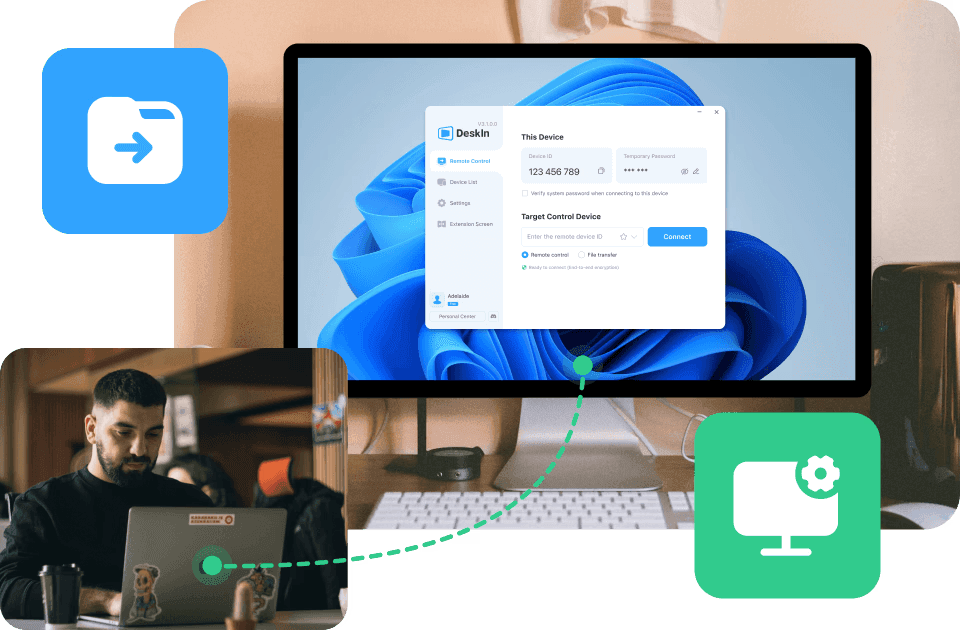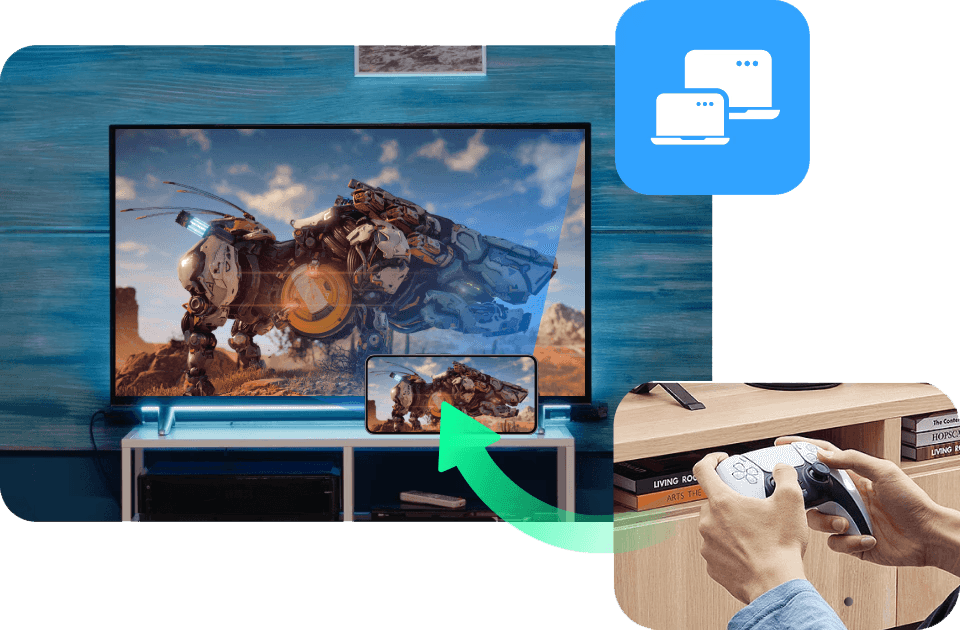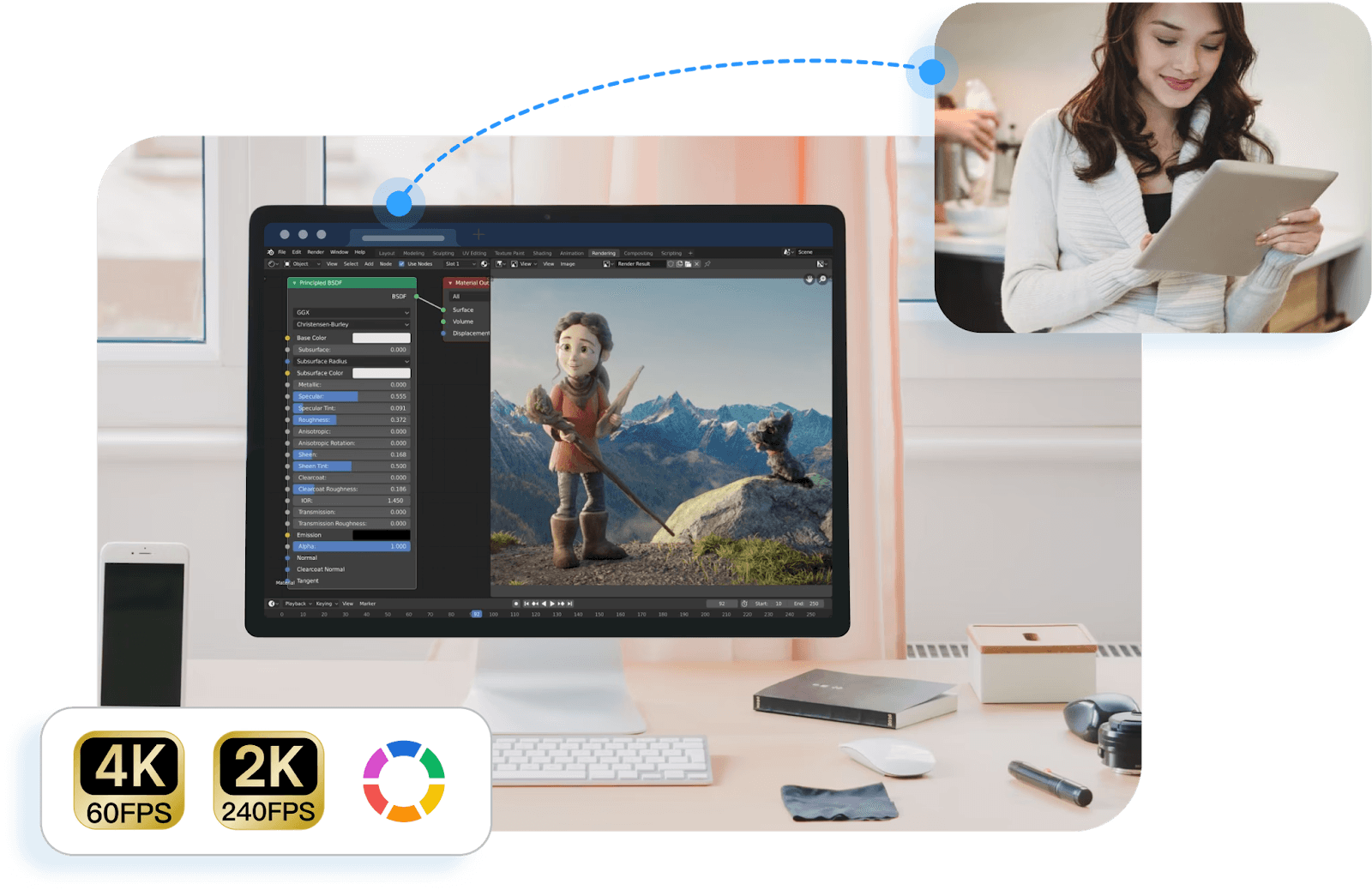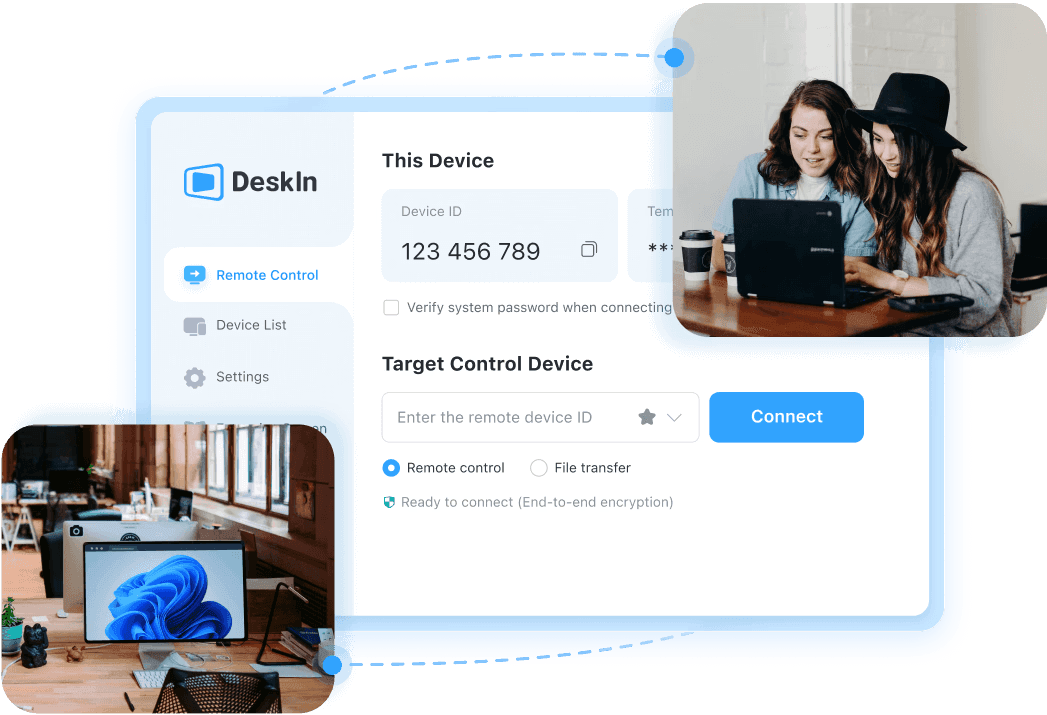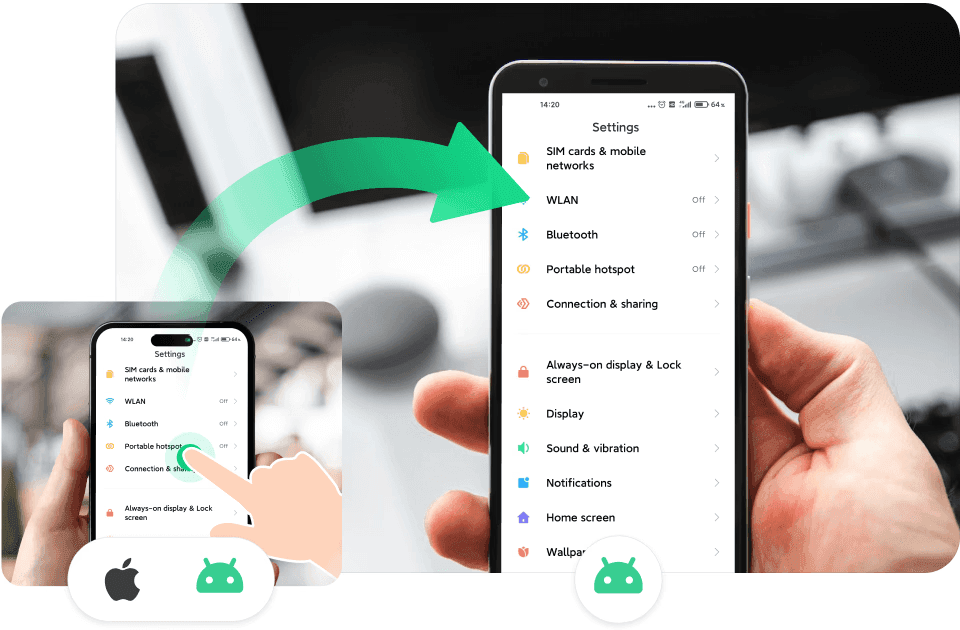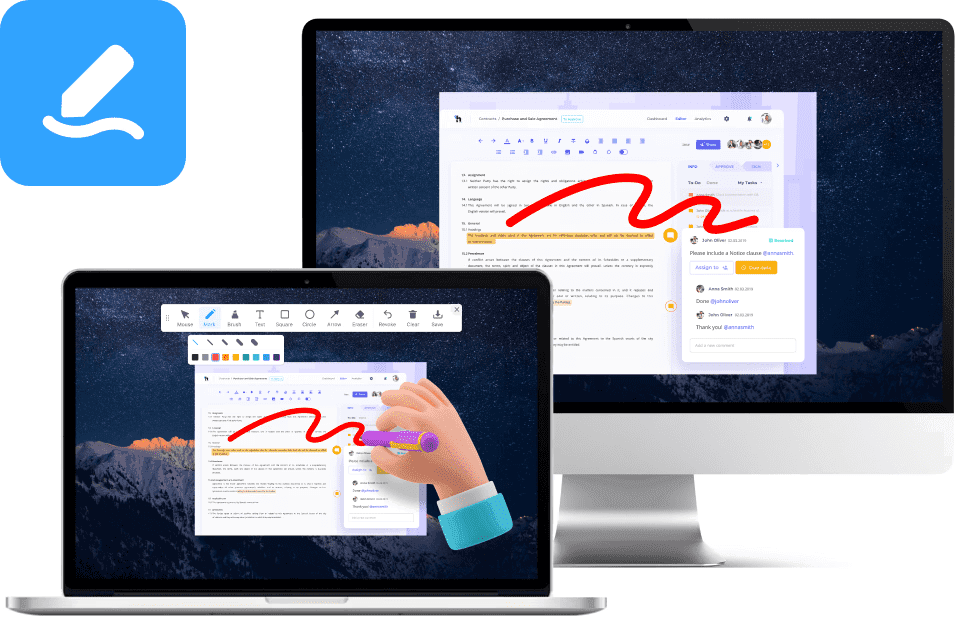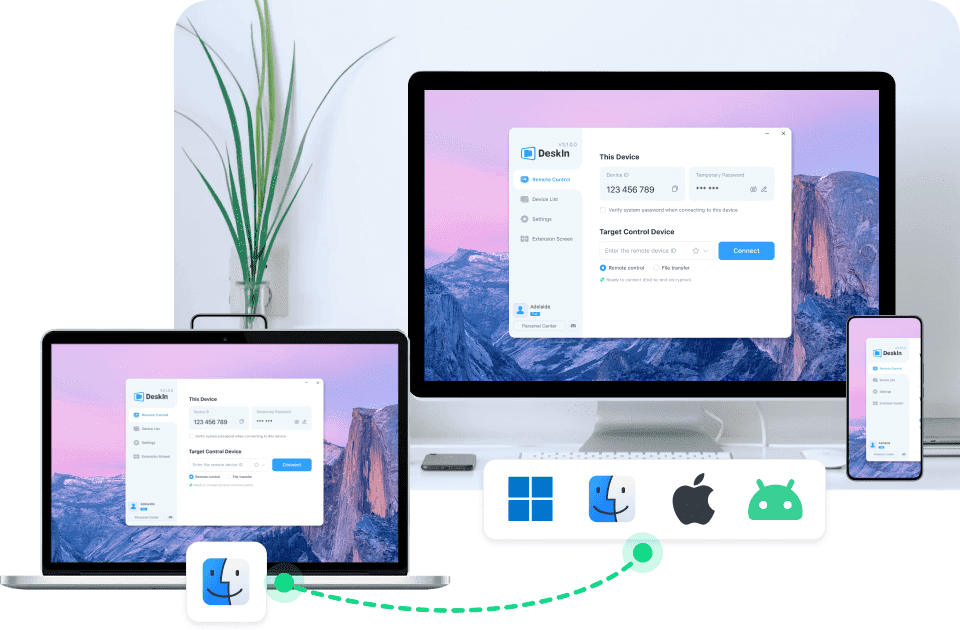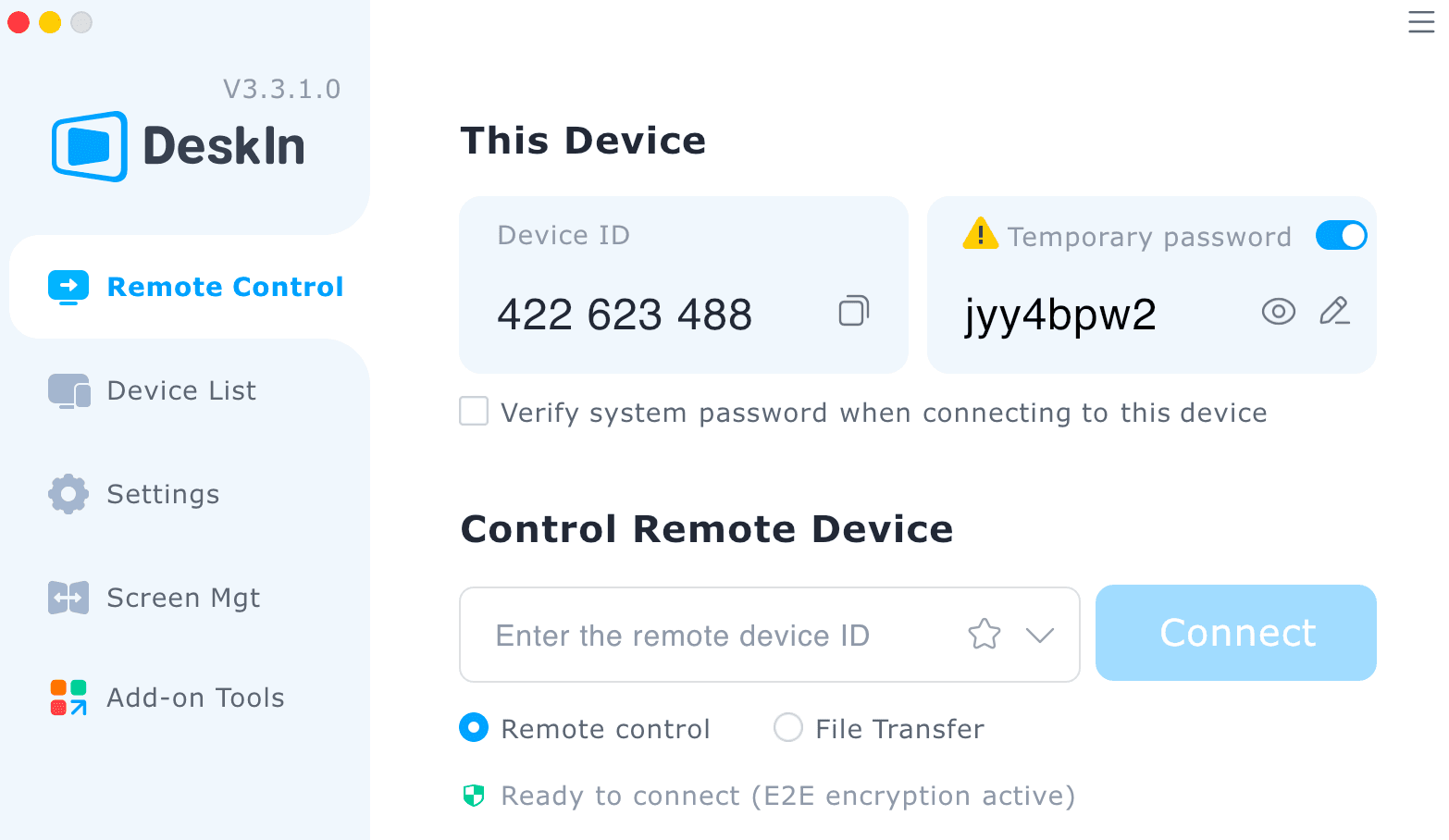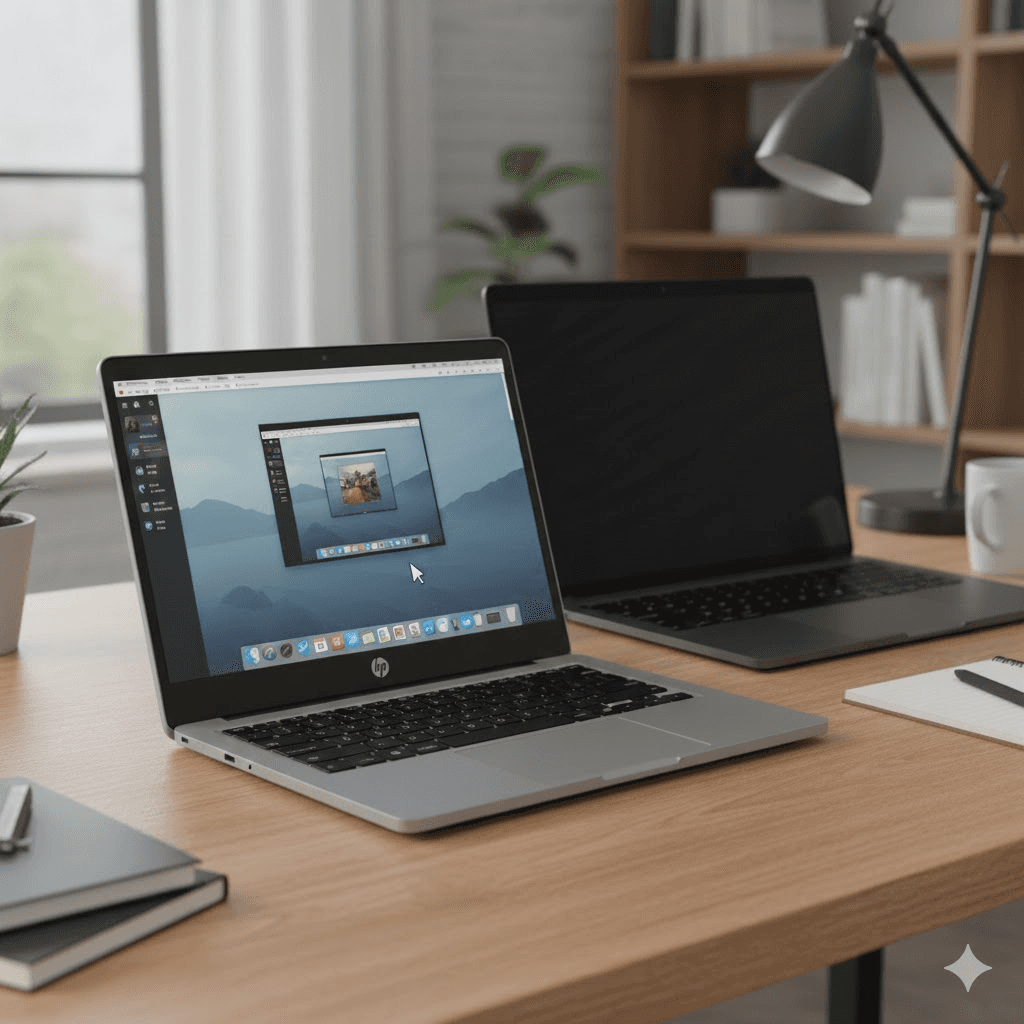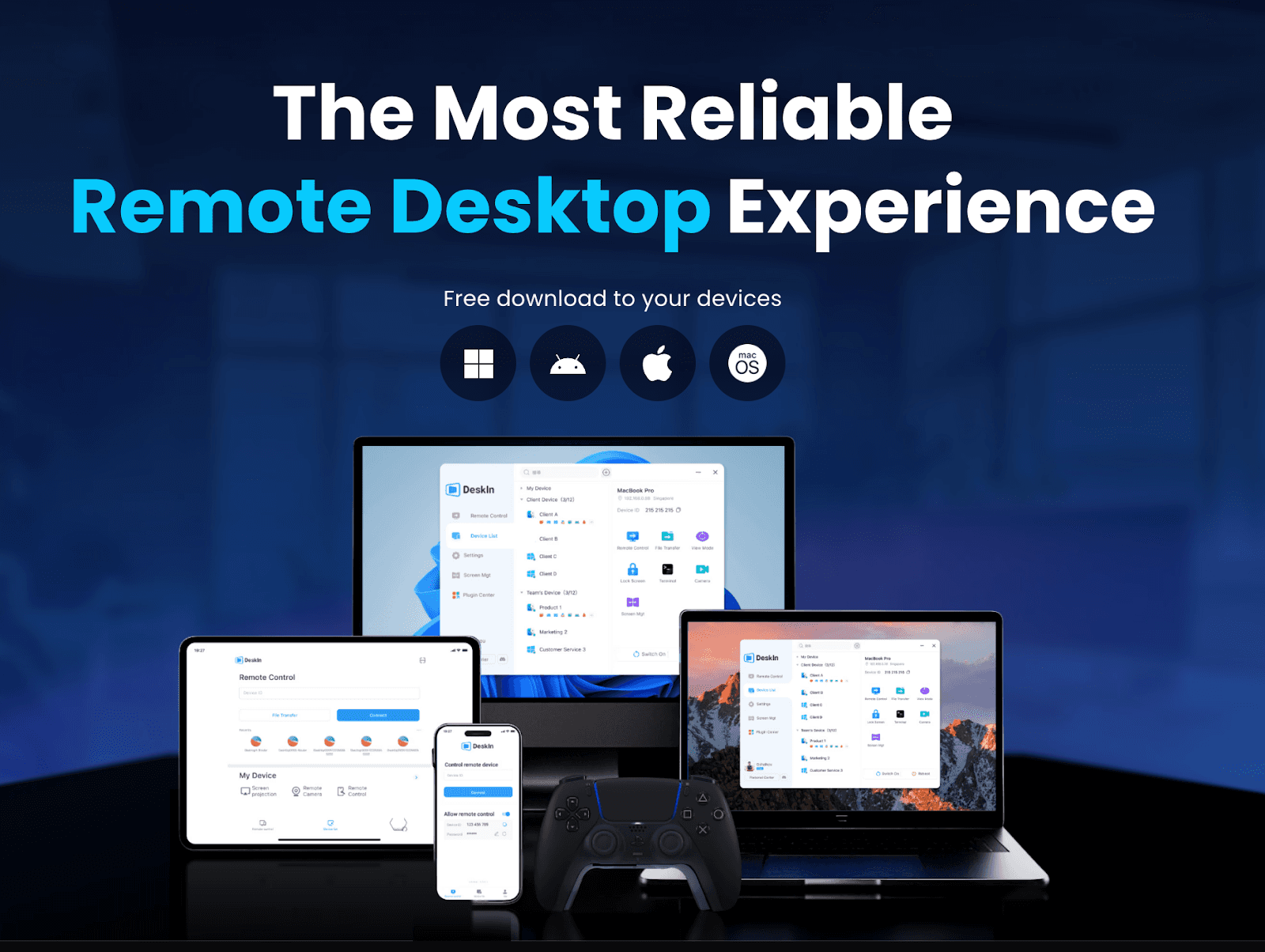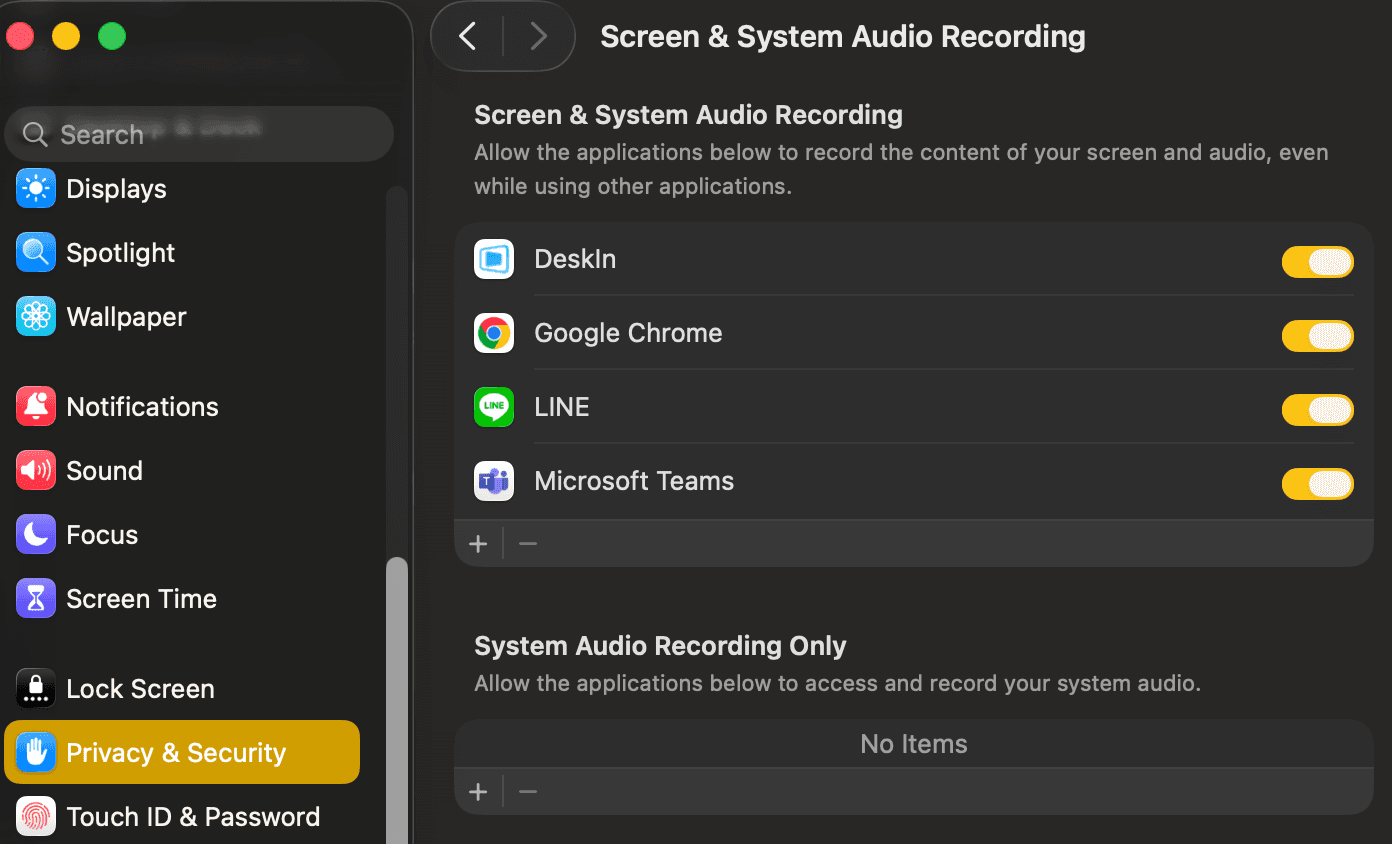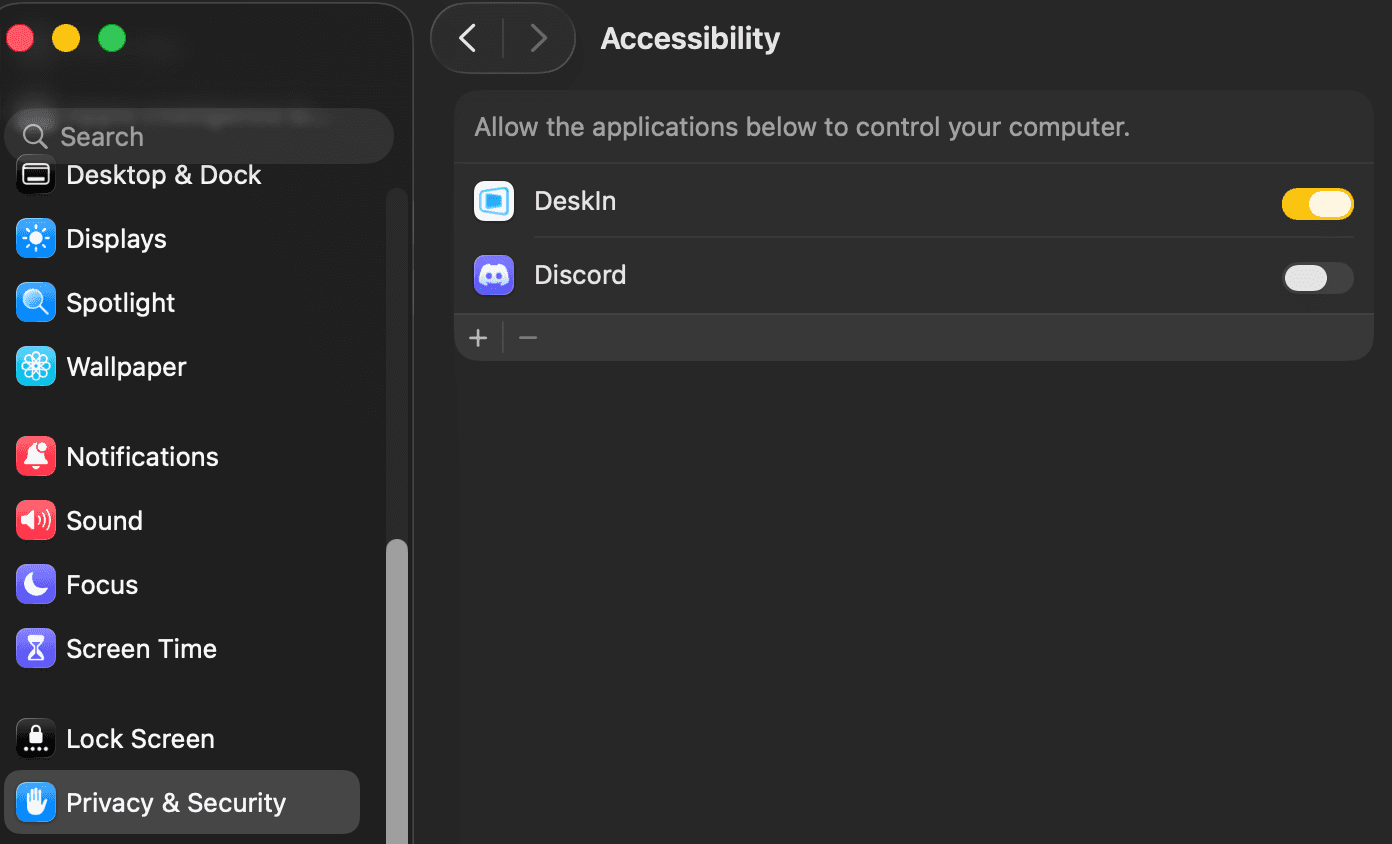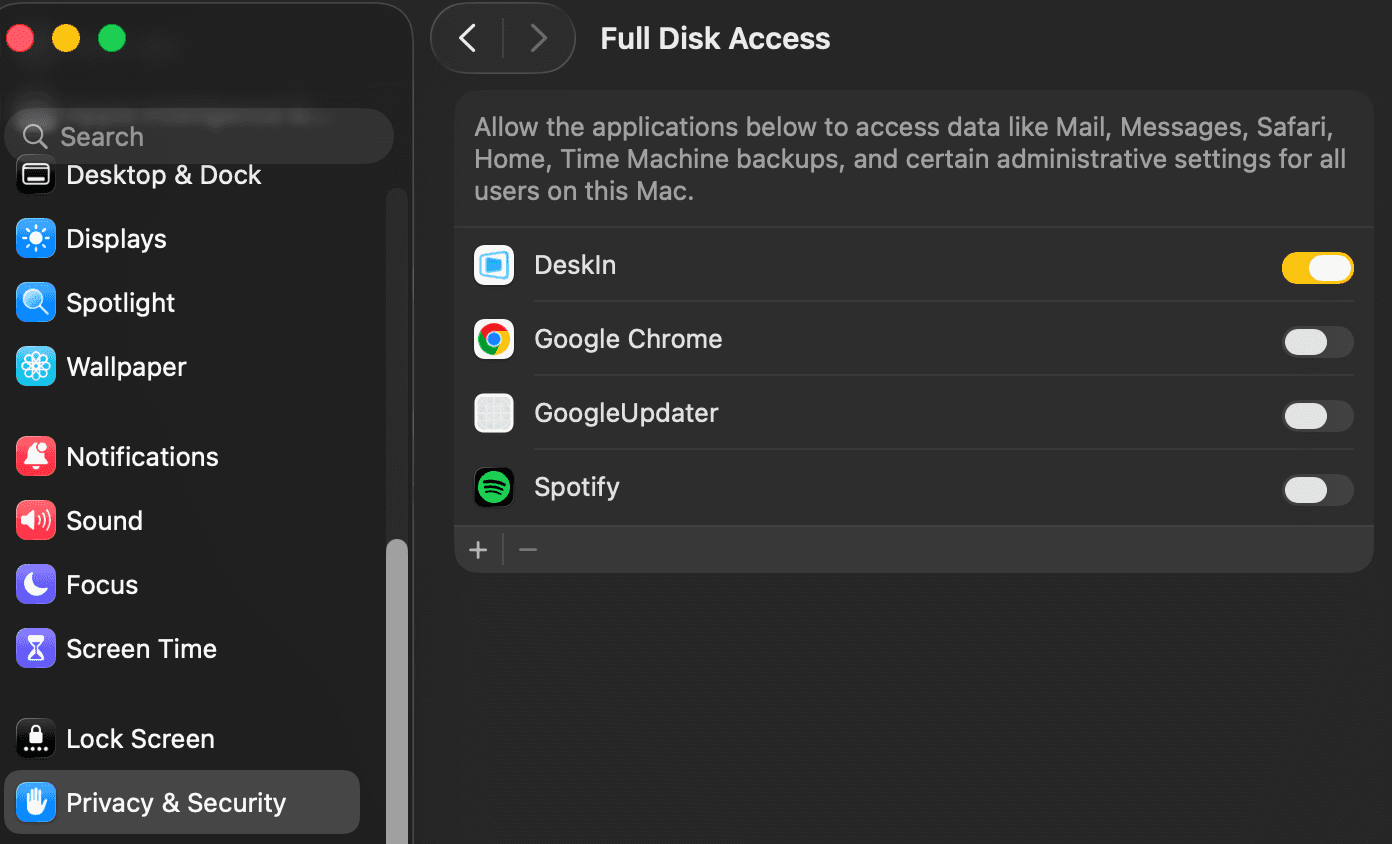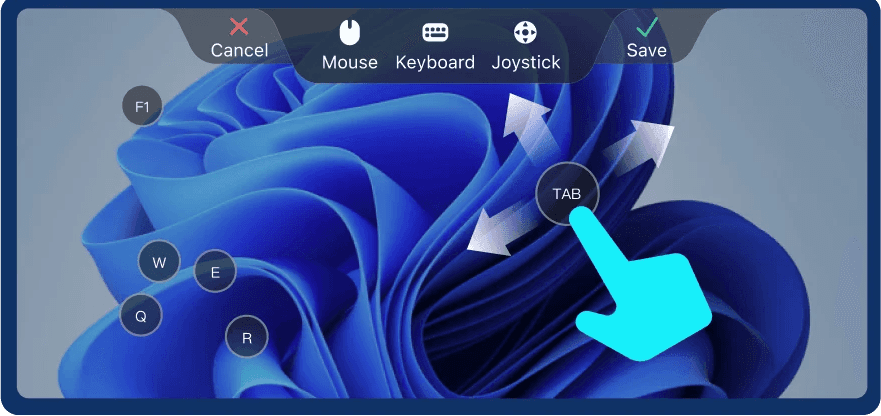Cách truy cập từ xa Windows từ các thiết bị khác [Đã thử nghiệm!]
Bạn không đơn độc nếu bạn từng cần truy cập từ xa một PC Windows từ xa, có thể mẹ bạn không thể mở lại email, hoặc bạn đã để lại một tệp quan trọng trên máy tính văn phòng của mình. Dù bạn đang sử dụng Mac, điện thoại Android, hay chỉ là một PC khác, việc tìm ra cách đáng tin cậy để truy cập từ xa vào một máy Windows có thể gây bối rối một cách đáng ngạc nhiên.
Giữa các cài đặt có sẵn, công cụ của bên thứ ba và các câu hỏi về khả năng tương thích, thật khó để biết đâu là lựa chọn an toàn và dễ sử dụng. Hướng dẫn này sẽ giúp bạn phân tích những cách tốt nhất để truy cập từ xa Windows, mà không làm phức tạp vấn đề.
👍 Bạn cũng có thể cần:
Phương pháp 1. Truy cập từ xa Windows qua DeskIn (Sử dụng trên nhiều nền tảng)
Nếu bạn đang tìm kiếm một cách nhanh chóng, an toàn và không rắc rối để truy cập từ xa một máy tính Windows từ hầu hết mọi thiết bị, dù là Mac, điện thoại Android, hay iPhone, DeskIn là một trong những công cụ tốt nhất có sẵn. Khác với nhiều giải pháp truyền thống yêu cầu thiết lập thủ công và điều chỉnh mạng, DeskIn cung cấp truy cập từ xa ngay lập tức mà không cần cấu hình. Dù bạn đang giúp một thành viên trong gia đình, truy cập tệp công việc từ nhà, hay quản lý nhiều thiết bị qua các nền tảng, DeskIn làm cho quá trình này trở nên liền mạch. Nhấn vào đây để tải xuống
👍 Tại sao chọn DeskIn?
Khả năng tương thích trên nhiều nền tảng: Truy cập PC Windows của bạn từ Mac, Android, hoặc iPhone một cách dễ dàng.
Không cần VPN hoặc cấu hình thủ công: Bắt đầu trong vài phút mà không đau đầu về công nghệ.
Hiệu suất độ nét cao và độ trễ thấp: Tận hưởng hình ảnh rõ nét và khả năng phản hồi gần như ngay lập tức, ngay cả qua mạng yếu.
Tính năng nâng cao: Bao gồm độ chính xác màu 4:4:4 cho các nhà sáng tạo và hỗ trợ nhập điều khiển trò chơi cho game thủ.
Hoàn hảo cho sử dụng cá nhân hoặc chuyên nghiệp: Dù bạn đang làm việc từ xa, chơi game, hay cung cấp hỗ trợ công nghệ, DeskIn đủ linh hoạt cho mọi tình huống.
Bước 1. Cài đặt DeskIn trên cả hai thiết bị
Tải xuống và cài đặt DeskIn trên PC Windows của bạn (thiết bị bạn muốn truy cập) và thiết bị từ xa mà bạn sẽ sử dụng để kết nối (Mac, Android, hoặc iPhone). Bạn có thể tìm phiên bản phù hợp từ trang web chính thức của DeskIn. Nhấn vào đây để tải xuống
Bước 2. Tạo một tài khoản và đăng nhập
Mở DeskIn trên cả hai thiết bị và đăng nhập bằng cùng một tài khoản. Vì lý do bảo mật, DeskIn sẽ yêu cầu bạn xác minh và ủy quyền từng thiết bị qua email lần đầu tiên bạn đăng nhập.

Bước 3. Bắt đầu phiên truy cập từ xa
Khi cả hai thiết bị đã liên kết với tài khoản của bạn, sử dụng ID thiết bị và mật khẩu để kết nối. Sau đó, chọn PC Windows từ danh sách thiết bị của bạn. Nhấn để bắt đầu một phiên điều khiển từ xa, và bạn sẽ được kết nối ngay lập tức.

Phương pháp 2. Truy cập từ xa Windows qua ứng dụng Windows (PC đến PC)
Nếu bạn chủ yếu sử dụng các thiết bị Windows, Giao thức Desktop từ xa (RDP) tích hợp sẵn của Microsoft cung cấp một cách an toàn và đáng tin cậy để truy cập PC Windows của bạn từ hầu như bất cứ đâu. Nó đặc biệt hữu ích cho việc làm việc trên các tệp, chạy các ứng dụng, hoặc quản lý cài đặt từ xa mà không cần phần mềm bổ sung. RDP hỗ trợ các kết nối từ xa từ các PC Windows khác cũng như các thiết bị Mac, Android và iOS qua ứng dụng Microsoft Windows.
Tuy nhiên, nó yêu cầu một số thiết lập một lần trên PC mục tiêu, và truy cập từ xa chỉ có thể khi PC đó được bật và kết nối với internet. Dưới đây là cách thiết lập và bắt đầu sử dụng nó một cách hiệu quả:
Bước 1. Đi đến "Bắt đầu > Cài đặt > Hệ thống > Desktop từ xa", sau đó bật "Bật Desktop từ xa". Hãy chắc chắn ghi chú tên PC của bạn vì bạn sẽ cần nó khi kết nối từ thiết bị khác.
Bước 2. Nhấn "Chọn người dùng có thể truy cập từ xa vào PC này" nếu bạn muốn cho phép các tài khoản bổ sung hoặc hạn chế quyền truy cập.
Bước 3. Trên một PC Windows khác, mở công cụ "Kết nối Desktop từ xa" và nhập tên PC. Trên Mac, iOS, hoặc Android, tải xuống "Ứng dụng Microsoft".
Bước 4. Khởi động ứng dụng, nhập tên PC, và nhấn "Kết nối". Nhập "thông tin tài khoản Windows" của bạn khi được yêu cầu để thiết lập kết nối.

Phương pháp 3. Truy cập từ xa Windows qua Chrome Remote Desktop (Thiết lập nhanh)
Nếu bạn đang tìm cách nhanh chóng và dễ dàng để truy cập PC Windows hoặc MacBook/iMac của mình từ xa, Chrome Remote Desktop là một lựa chọn tuyệt vời. Đây là một giải pháp miễn phí, dựa trên trình duyệt, hoạt động trên nhiều nền tảng khác nhau, bao gồm Windows, Mac, iOS và Android. Một trong những lợi thế lớn của Chrome Remote Desktop là tính đơn giản của nó, nó không yêu cầu thiết lập phức tạp hoặc cấu hình, khiến nó trở thành một lựa chọn phổ biến cho những người dùng cần kết nối nhanh, không rắc rối.
Chrome Remote Desktop là một giải pháp lý tưởng cho người dùng bình thường hoặc những ai cần một cách đơn giản, không phiền phức để truy cập vào máy tính Windows của họ. Mặc dù nó không có nhiều tính năng nâng cao như các công cụ truy cập từ xa khác, nhưng đây là một lựa chọn dễ sử dụng đáp ứng nhu cầu điều khiển từ xa cơ bản của đa số người dùng. Bây giờ, hãy cùng đi qua các bước để bạn có thể kết nối.
Bước 1. Cài đặt Google Chrome trên cả PC Windows của bạn và thiết bị mà bạn muốn sử dụng để truy cập từ xa (Mac, Android, hoặc iPhone).
Bước 2. Làm theo hướng dẫn để kích hoạt quyền truy cập trên PC Windows của bạn và tạo một PIN để bảo mật kết nối.
Bước 3. Trên thiết bị từ xa của bạn (dù là trình duyệt hay ứng dụng), mở Chrome Remote Desktop.
Bước 4. Chọn PC mục tiêu của bạn từ danh sách thiết bị, sau đó nhập PIN mà bạn đã tạo trước đó để thiết lập kết nối.

Phần mềm truy cập từ xa nào cho Windows bạn nên chọn?
Để giúp bạn chọn phần mềm truy cập từ xa tốt nhất cho Windows, chúng tôi đã so sánh ba tùy chọn hàng đầu dựa trên các tính năng chính của chúng, hỗ trợ nền tảng và trường hợp sử dụng lý tưởng.
Phương pháp | Tốt nhất cho | Nền tảng hỗ trợ | Tính năng chính |
|---|---|---|---|
DeskIn | Sử dụng cá nhân & doanh nghiệp | Windows, Mac, iOS, Android | Điều khiển từ xa hiệu suất cao, chuyển tệp, chơi game và công cụ sáng tạo |
Ứng dụng Windows | Người sử dụng doanh nghiệp & IT | Windows, Mac, iOS, Android | Công cụ Windows gốc, kết nối an toàn & ổn định |
Chrome Remote Desktop | Người dùng thông thường & truy cập nhanh | Windows, Mac, iOS, Android | Dựa trên trình duyệt, miễn phí, dễ sử dụng, không cần cài đặt |
Mỗi tùy chọn phần mềm có những điểm mạnh dựa trên nhu cầu khác nhau, bất kể bạn cần công cụ chuyên nghiệp, truy cập đơn giản, hay tính linh hoạt trên nhiều nền tảng. Hãy xem xét ưu tiên và các thiết bị bạn đang sử dụng để đưa ra quyết định tốt nhất.
Những suy nghĩ cuối cùng
Việc chọn phương pháp đúng cho truy cập từ xa vào Windows phần lớn phụ thuộc vào nền tảng, nhu cầu kỹ thuật của bạn cũng như cách bạn định sử dụng kết nối. Đối với giải pháp linh hoạt nhất, mạnh mẽ nhất và trên nhiều nền tảng, DeskIn nổi bật như là lựa chọn tốt nhất cho truy cập liền mạch vào PC Windows của bạn. Cho dù bạn đang sử dụng cho các tác vụ cá nhân, hoạt động kinh doanh, hay thậm chí chơi game, DeskIn cung cấp một bộ tính năng toàn diện để đáp ứng nhu cầu của bạn một cách dễ dàng!
Cách truy cập từ xa Windows từ các thiết bị khác [Đã thử nghiệm!]
Bạn không đơn độc nếu bạn từng cần truy cập từ xa một PC Windows từ xa, có thể mẹ bạn không thể mở lại email, hoặc bạn đã để lại một tệp quan trọng trên máy tính văn phòng của mình. Dù bạn đang sử dụng Mac, điện thoại Android, hay chỉ là một PC khác, việc tìm ra cách đáng tin cậy để truy cập từ xa vào một máy Windows có thể gây bối rối một cách đáng ngạc nhiên.
Giữa các cài đặt có sẵn, công cụ của bên thứ ba và các câu hỏi về khả năng tương thích, thật khó để biết đâu là lựa chọn an toàn và dễ sử dụng. Hướng dẫn này sẽ giúp bạn phân tích những cách tốt nhất để truy cập từ xa Windows, mà không làm phức tạp vấn đề.
👍 Bạn cũng có thể cần:
Phương pháp 1. Truy cập từ xa Windows qua DeskIn (Sử dụng trên nhiều nền tảng)
Nếu bạn đang tìm kiếm một cách nhanh chóng, an toàn và không rắc rối để truy cập từ xa một máy tính Windows từ hầu hết mọi thiết bị, dù là Mac, điện thoại Android, hay iPhone, DeskIn là một trong những công cụ tốt nhất có sẵn. Khác với nhiều giải pháp truyền thống yêu cầu thiết lập thủ công và điều chỉnh mạng, DeskIn cung cấp truy cập từ xa ngay lập tức mà không cần cấu hình. Dù bạn đang giúp một thành viên trong gia đình, truy cập tệp công việc từ nhà, hay quản lý nhiều thiết bị qua các nền tảng, DeskIn làm cho quá trình này trở nên liền mạch. Nhấn vào đây để tải xuống
👍 Tại sao chọn DeskIn?
Khả năng tương thích trên nhiều nền tảng: Truy cập PC Windows của bạn từ Mac, Android, hoặc iPhone một cách dễ dàng.
Không cần VPN hoặc cấu hình thủ công: Bắt đầu trong vài phút mà không đau đầu về công nghệ.
Hiệu suất độ nét cao và độ trễ thấp: Tận hưởng hình ảnh rõ nét và khả năng phản hồi gần như ngay lập tức, ngay cả qua mạng yếu.
Tính năng nâng cao: Bao gồm độ chính xác màu 4:4:4 cho các nhà sáng tạo và hỗ trợ nhập điều khiển trò chơi cho game thủ.
Hoàn hảo cho sử dụng cá nhân hoặc chuyên nghiệp: Dù bạn đang làm việc từ xa, chơi game, hay cung cấp hỗ trợ công nghệ, DeskIn đủ linh hoạt cho mọi tình huống.
Bước 1. Cài đặt DeskIn trên cả hai thiết bị
Tải xuống và cài đặt DeskIn trên PC Windows của bạn (thiết bị bạn muốn truy cập) và thiết bị từ xa mà bạn sẽ sử dụng để kết nối (Mac, Android, hoặc iPhone). Bạn có thể tìm phiên bản phù hợp từ trang web chính thức của DeskIn. Nhấn vào đây để tải xuống
Bước 2. Tạo một tài khoản và đăng nhập
Mở DeskIn trên cả hai thiết bị và đăng nhập bằng cùng một tài khoản. Vì lý do bảo mật, DeskIn sẽ yêu cầu bạn xác minh và ủy quyền từng thiết bị qua email lần đầu tiên bạn đăng nhập.

Bước 3. Bắt đầu phiên truy cập từ xa
Khi cả hai thiết bị đã liên kết với tài khoản của bạn, sử dụng ID thiết bị và mật khẩu để kết nối. Sau đó, chọn PC Windows từ danh sách thiết bị của bạn. Nhấn để bắt đầu một phiên điều khiển từ xa, và bạn sẽ được kết nối ngay lập tức.

Phương pháp 2. Truy cập từ xa Windows qua ứng dụng Windows (PC đến PC)
Nếu bạn chủ yếu sử dụng các thiết bị Windows, Giao thức Desktop từ xa (RDP) tích hợp sẵn của Microsoft cung cấp một cách an toàn và đáng tin cậy để truy cập PC Windows của bạn từ hầu như bất cứ đâu. Nó đặc biệt hữu ích cho việc làm việc trên các tệp, chạy các ứng dụng, hoặc quản lý cài đặt từ xa mà không cần phần mềm bổ sung. RDP hỗ trợ các kết nối từ xa từ các PC Windows khác cũng như các thiết bị Mac, Android và iOS qua ứng dụng Microsoft Windows.
Tuy nhiên, nó yêu cầu một số thiết lập một lần trên PC mục tiêu, và truy cập từ xa chỉ có thể khi PC đó được bật và kết nối với internet. Dưới đây là cách thiết lập và bắt đầu sử dụng nó một cách hiệu quả:
Bước 1. Đi đến "Bắt đầu > Cài đặt > Hệ thống > Desktop từ xa", sau đó bật "Bật Desktop từ xa". Hãy chắc chắn ghi chú tên PC của bạn vì bạn sẽ cần nó khi kết nối từ thiết bị khác.
Bước 2. Nhấn "Chọn người dùng có thể truy cập từ xa vào PC này" nếu bạn muốn cho phép các tài khoản bổ sung hoặc hạn chế quyền truy cập.
Bước 3. Trên một PC Windows khác, mở công cụ "Kết nối Desktop từ xa" và nhập tên PC. Trên Mac, iOS, hoặc Android, tải xuống "Ứng dụng Microsoft".
Bước 4. Khởi động ứng dụng, nhập tên PC, và nhấn "Kết nối". Nhập "thông tin tài khoản Windows" của bạn khi được yêu cầu để thiết lập kết nối.

Phương pháp 3. Truy cập từ xa Windows qua Chrome Remote Desktop (Thiết lập nhanh)
Nếu bạn đang tìm cách nhanh chóng và dễ dàng để truy cập PC Windows hoặc MacBook/iMac của mình từ xa, Chrome Remote Desktop là một lựa chọn tuyệt vời. Đây là một giải pháp miễn phí, dựa trên trình duyệt, hoạt động trên nhiều nền tảng khác nhau, bao gồm Windows, Mac, iOS và Android. Một trong những lợi thế lớn của Chrome Remote Desktop là tính đơn giản của nó, nó không yêu cầu thiết lập phức tạp hoặc cấu hình, khiến nó trở thành một lựa chọn phổ biến cho những người dùng cần kết nối nhanh, không rắc rối.
Chrome Remote Desktop là một giải pháp lý tưởng cho người dùng bình thường hoặc những ai cần một cách đơn giản, không phiền phức để truy cập vào máy tính Windows của họ. Mặc dù nó không có nhiều tính năng nâng cao như các công cụ truy cập từ xa khác, nhưng đây là một lựa chọn dễ sử dụng đáp ứng nhu cầu điều khiển từ xa cơ bản của đa số người dùng. Bây giờ, hãy cùng đi qua các bước để bạn có thể kết nối.
Bước 1. Cài đặt Google Chrome trên cả PC Windows của bạn và thiết bị mà bạn muốn sử dụng để truy cập từ xa (Mac, Android, hoặc iPhone).
Bước 2. Làm theo hướng dẫn để kích hoạt quyền truy cập trên PC Windows của bạn và tạo một PIN để bảo mật kết nối.
Bước 3. Trên thiết bị từ xa của bạn (dù là trình duyệt hay ứng dụng), mở Chrome Remote Desktop.
Bước 4. Chọn PC mục tiêu của bạn từ danh sách thiết bị, sau đó nhập PIN mà bạn đã tạo trước đó để thiết lập kết nối.

Phần mềm truy cập từ xa nào cho Windows bạn nên chọn?
Để giúp bạn chọn phần mềm truy cập từ xa tốt nhất cho Windows, chúng tôi đã so sánh ba tùy chọn hàng đầu dựa trên các tính năng chính của chúng, hỗ trợ nền tảng và trường hợp sử dụng lý tưởng.
Phương pháp | Tốt nhất cho | Nền tảng hỗ trợ | Tính năng chính |
|---|---|---|---|
DeskIn | Sử dụng cá nhân & doanh nghiệp | Windows, Mac, iOS, Android | Điều khiển từ xa hiệu suất cao, chuyển tệp, chơi game và công cụ sáng tạo |
Ứng dụng Windows | Người sử dụng doanh nghiệp & IT | Windows, Mac, iOS, Android | Công cụ Windows gốc, kết nối an toàn & ổn định |
Chrome Remote Desktop | Người dùng thông thường & truy cập nhanh | Windows, Mac, iOS, Android | Dựa trên trình duyệt, miễn phí, dễ sử dụng, không cần cài đặt |
Mỗi tùy chọn phần mềm có những điểm mạnh dựa trên nhu cầu khác nhau, bất kể bạn cần công cụ chuyên nghiệp, truy cập đơn giản, hay tính linh hoạt trên nhiều nền tảng. Hãy xem xét ưu tiên và các thiết bị bạn đang sử dụng để đưa ra quyết định tốt nhất.
Những suy nghĩ cuối cùng
Việc chọn phương pháp đúng cho truy cập từ xa vào Windows phần lớn phụ thuộc vào nền tảng, nhu cầu kỹ thuật của bạn cũng như cách bạn định sử dụng kết nối. Đối với giải pháp linh hoạt nhất, mạnh mẽ nhất và trên nhiều nền tảng, DeskIn nổi bật như là lựa chọn tốt nhất cho truy cập liền mạch vào PC Windows của bạn. Cho dù bạn đang sử dụng cho các tác vụ cá nhân, hoạt động kinh doanh, hay thậm chí chơi game, DeskIn cung cấp một bộ tính năng toàn diện để đáp ứng nhu cầu của bạn một cách dễ dàng!

Play x Work
All at Once
DeskIn Remote Game
only $14.32 USD 🎉 Limited on July 16-31
Add promo code: deskinsummer1





